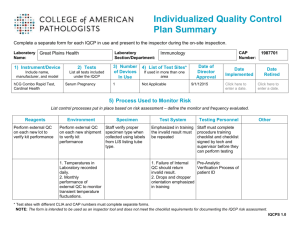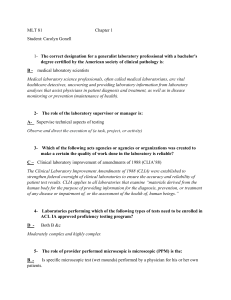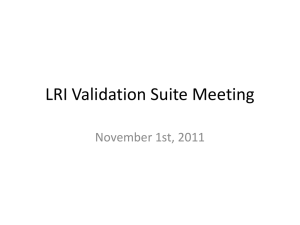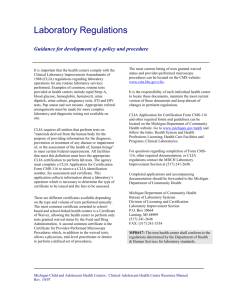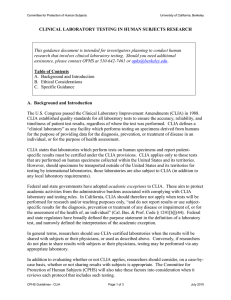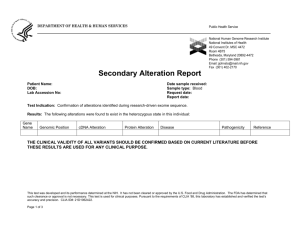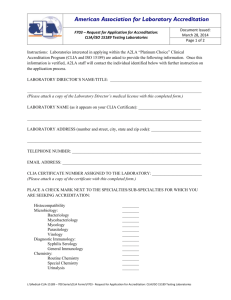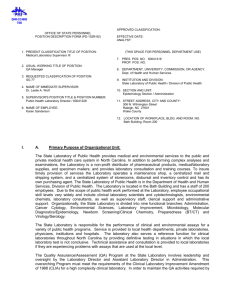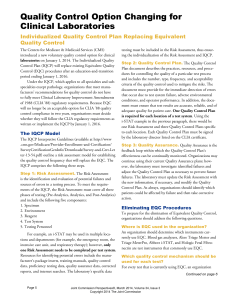Additional Implementation Guidance – Other Clinical Laboratory
advertisement
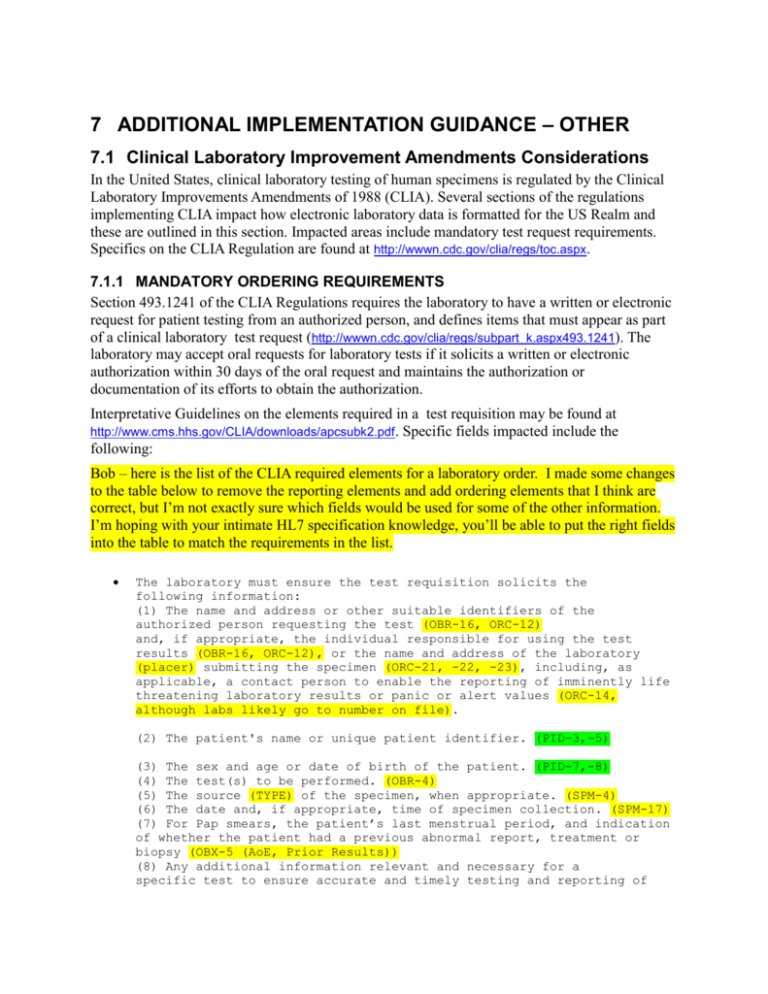
7 ADDITIONAL IMPLEMENTATION GUIDANCE – OTHER 7.1 Clinical Laboratory Improvement Amendments Considerations In the United States, clinical laboratory testing of human specimens is regulated by the Clinical Laboratory Improvements Amendments of 1988 (CLIA). Several sections of the regulations implementing CLIA impact how electronic laboratory data is formatted for the US Realm and these are outlined in this section. Impacted areas include mandatory test request requirements. Specifics on the CLIA Regulation are found at http://wwwn.cdc.gov/clia/regs/toc.aspx. 7.1.1 MANDATORY ORDERING REQUIREMENTS Section 493.1241 of the CLIA Regulations requires the laboratory to have a written or electronic request for patient testing from an authorized person, and defines items that must appear as part of a clinical laboratory test request (http://wwwn.cdc.gov/clia/regs/subpart_k.aspx493.1241). The laboratory may accept oral requests for laboratory tests if it solicits a written or electronic authorization within 30 days of the oral request and maintains the authorization or documentation of its efforts to obtain the authorization. Interpretative Guidelines on the elements required in a test requisition may be found at http://www.cms.hhs.gov/CLIA/downloads/apcsubk2.pdf. Specific fields impacted include the following: Bob – here is the list of the CLIA required elements for a laboratory order. I made some changes to the table below to remove the reporting elements and add ordering elements that I think are correct, but I’m not exactly sure which fields would be used for some of the other information. I’m hoping with your intimate HL7 specification knowledge, you’ll be able to put the right fields into the table to match the requirements in the list. The laboratory must ensure the test requisition solicits the following information: (1) The name and address or other suitable identifiers of the authorized person requesting the test (OBR-16, ORC-12) and, if appropriate, the individual responsible for using the test results (OBR-16, ORC-12), or the name and address of the laboratory (placer) submitting the specimen (ORC-21, -22, -23), including, as applicable, a contact person to enable the reporting of imminently life threatening laboratory results or panic or alert values (ORC-14, although labs likely go to number on file). (2) The patient's name or unique patient identifier. (PID-3,-5) (3) The sex and age or date of birth of the patient. (PID-7,-8) (4) The test(s) to be performed. (OBR-4) (5) The source (TYPE) of the specimen, when appropriate. (SPM-4) (6) The date and, if appropriate, time of specimen collection. (SPM-17) (7) For Pap smears, the patient’s last menstrual period, and indication of whether the patient had a previous abnormal report, treatment or biopsy (OBX-5 (AoE, Prior Results)) (8) Any additional information relevant and necessary for a specific test to ensure accurate and timely testing and reporting of results, including interpretation, if applicable. (OBR-13 (Currently optional, reopens discussion), OBX-5, OBX-3 (AoE, Prior Results)) Table 7-1. Mandatory Test Request Requirements Segment Field CLIA Impact PID-3 Patient Identifier List A unique patient identification number is required PID-5 Patient Name Positive patient identification required. If the patient’s name is known, this must be that name. If it is not known, a unique patient identifier must be assigned. PID-7 Date/Time of Birth PID-8 Administrative Sex SPM-4 Specimen Type Ordering requirements call for the specimen source, which equates at minimum to the Specimen Type in the SPM segment. See Section Error! Reference source not found. Error! Reference source not found. for vocabulary use. SPM-17 Specimen Collection Date/Time Ordering requirements call for the date and, if appropriate, time of specimen collection 7.1.2 REGULATORY COMPLIANCE There may be local, state or federal regulations where the electronic message from an ordering provider is presumed to be the legal request for the tests performed. Hence, the receiver may be required to save the format or content of the message for the same time period as required for any other legal document. 7.1.3 AUTHORIZED PARTIES Local laws, generally at the State level, govern who is authorized to order laboratory testing. CLIA restricts the ability of those authorized to order laboratory testing to just those approved at the local level and sets no national standards. Testing laboratories may not accept laboratory orders from unauthorized parties under CLIA. Testing laboratories either have a trusted relationship with the ordering party or presume that the ordering party is authorized to order laboratory testing.


